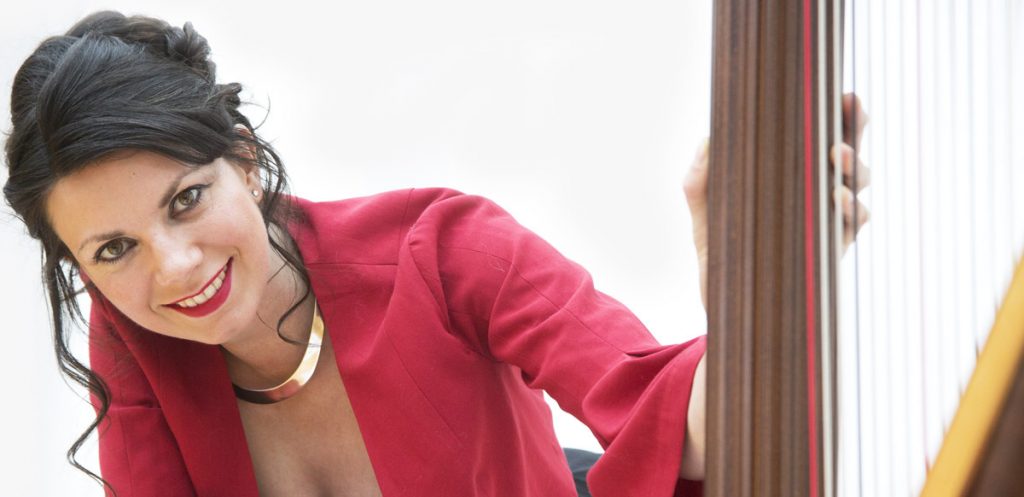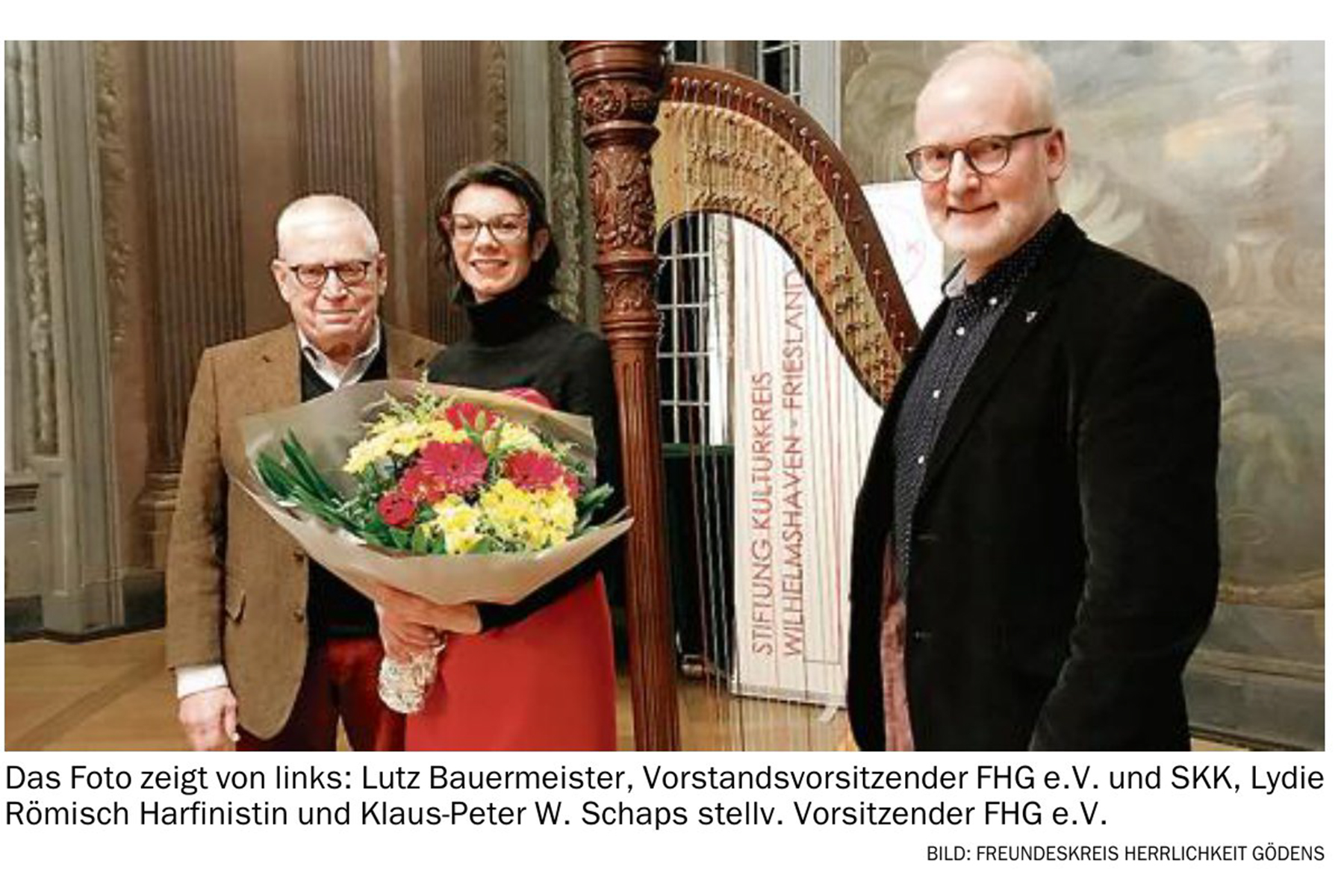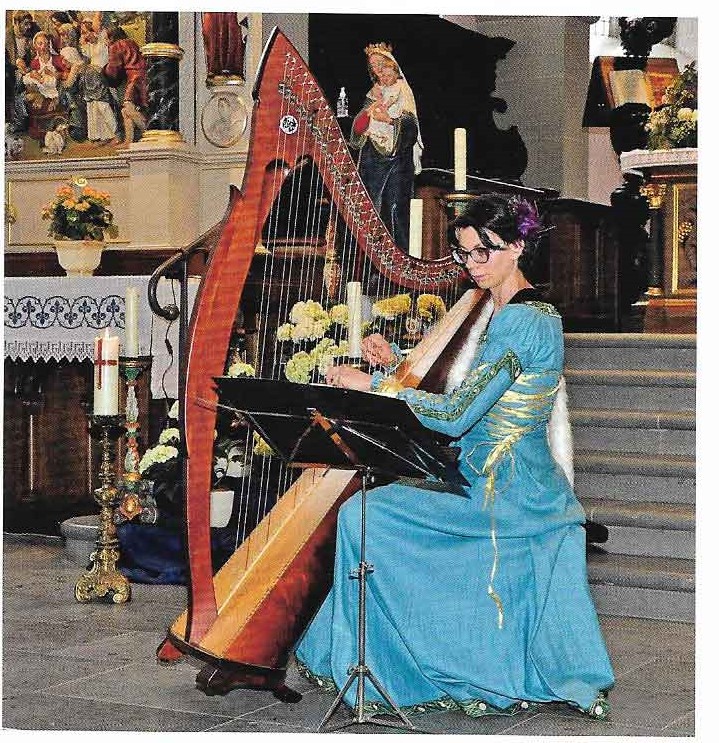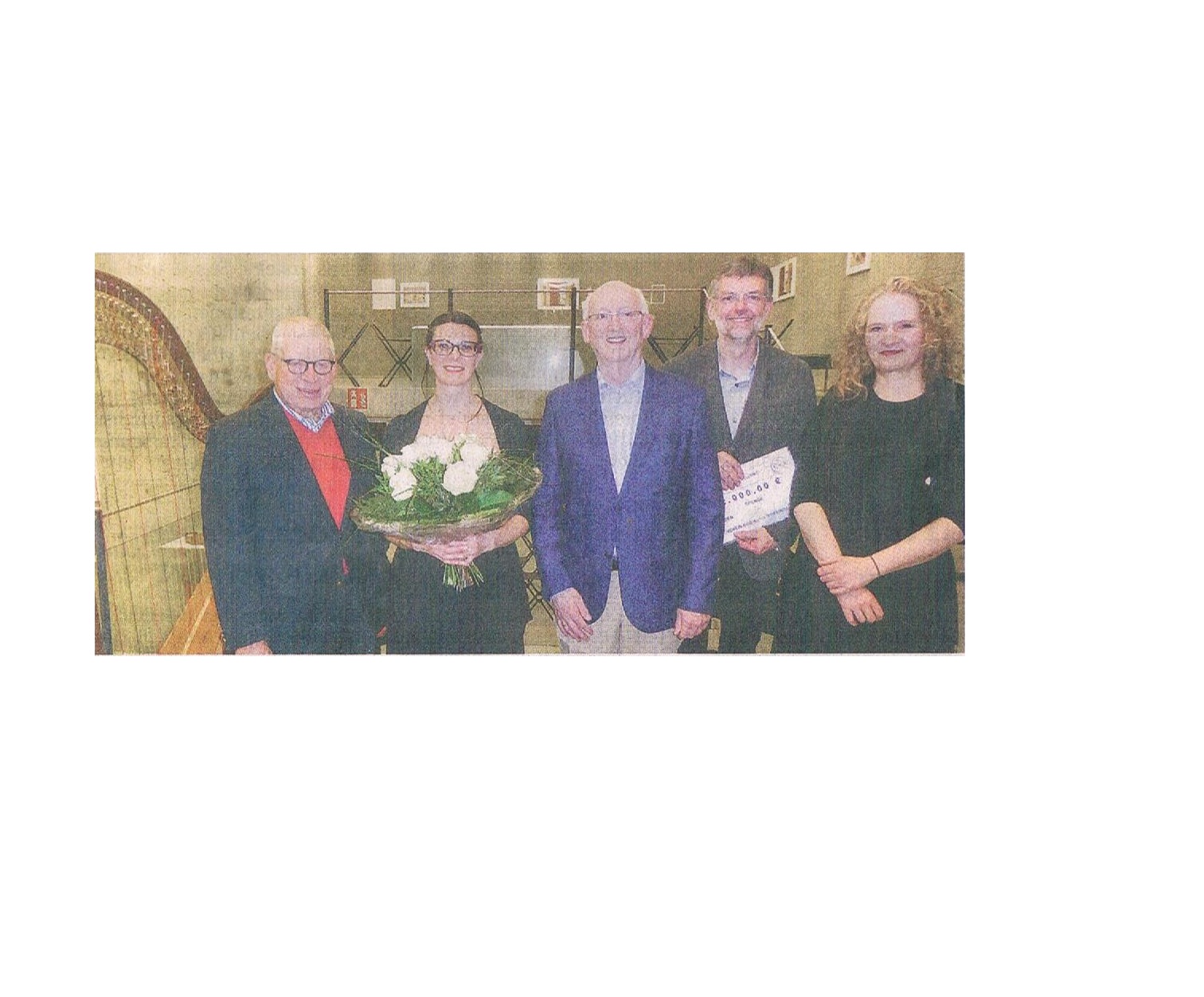
Neue Westfälische, Rainer Gerbaulet
"In the Magical Realm of the Harp
Lydie Römisch filled the standing-room-only Apostle Church with melody.
Gutersloh. The audience of the Apostle Church were treated to a concert of an extraordinary sort by the well-known French harpist Lydie Römisch of Bielefeld. The expansive sound spectrum of the double-pedal and Celtic harps entranced the audience in the widely diversified program of works spanning from the classical to the modern periods.
After a brisk opening with a Hungarian dance from Ferenc Farkas, Ms. Römisch performed Sofia Cori-Dussek’s “Sonata for Harp,” providing an excellent opportunity for her to display the diverse tones and moods of the classical harp, from the deep meditativeness of the slower movements to the sprightliness of the finale.
Film music also reached the ear
Her expression in the ‘Greensleeves’ Variations revealed their range from the slow and romantic to the lively and playful. Here, the Celtic harp made its appearance, which the former solo harpist of the Bielefeld Philharmonic masterfully played with the same virtuosity as the concert harp.
In the second half of the program, the Celtic harp was again featured in Römisch’s interpretation of the “Amelie’s Waltz” from the wonderfully whimsical film, “Amelie,” a rendition certain to have conjured up mind’s eye images for those who have already enjoyed the film.
The distinctive sounds of Phillip Hersant’s “Bamyan,” with its flageolet motifs enriched with oriental sounding chords, off-key harmonies, and brusque tones, piqued the listeners’ interest as it released music perhaps uncharacteristic of what one expects of a classical harp. The perfect sound of the harp was made even richer with this unusual compositional work of art.
Displaying the fullness of a conventional harp tone-coloration, Ms. Römisch closed concert program with Ernesto Lecuona’s famous Moorish melody, “Malaguena,” from the Spanish suite “Andalucia.” Her interpretation coaxed guitar sounds and Spanish rhythms from the strings, conjuring up rising waves of southern Spain’s summer heat.
The audience’s long and enthusiastic response in applause earned the joy of two encore performances. In the first, French composer Bernard Andrès’ “Duke,” revealed Ms. Römisch’s jazzier side as well as another flexibility of the classical harp. In the second, the audience’s ear was filled with ethereal beauty of Debussy’s “Claire de Lune,” a quintessential piece for the harp’s tender tones.
After the concert, a Q&A session
Lydie Römish presented herself as an accomplished master of her instrument and its various forms and voice expressions as she – with her unique French charm – guided the audience through the program and as she answered the many questions of the curious concert visitors afterwards. This well-rounded event also renewed concert-goers appreciation for the cultural contributions of the School of Music and Arts in Gütersloh, where Ms. Römisch is an instructor."
Neue Westfälische, Michael Beughold
« Crystal and sparkling harp sounds enchant the audience.
The harpist Lydie Römisch presented a captivating program and participated in the main work A Ceremony of Carols by Benjamin Brittens.
Lydie Römisch brilliantly and sensibly relayed baroque music to modern music.
Two sonatas by Scarlatti (K. 213 and 224) were also very well emphasized on her instrument, when it eloquently transcended the character of study of Andante in D minor and elegantly nuanced virtuoso and beaded abundance by an appropriate sound.
Her interpretation of Bamyan (2002) by Philippe Hersant, a magical piece whose harmonious pattern with cymbalum-like tones, colored with middle-eastern shades and enlarged by Impressionist influences, was from a technical point of view as well as from the musical expression of high class.
During the solo interlude between This little Babe and In Freezing Winter Night (certainly difficult to sing), the crystalline and sparkling sounds of the harp enchanted the grateful audience. »
WZ:
“The cultural highpoint of the evening was a concert by harpist Lydie Römisch featuring both the classical and Irish harps for various arrangements. The artist, raised and trained in France and now married and living in Germany, captivated the hearts of her audience with lyrical virtuosity on these technically demanding instruments and, in doing so, elicited a long and enthusiastic applause. “The compositions spanning various centuries filled the art museum with magical and enchanting sounds,” commented the foundation’s chairman following the evening’s festivities."
Neue Westfällische, Michael Beughold
« The harpist Lydie Römisch showed her know-how with three different charts. Subtle, precise and pearled sounds in Benjamin Brittens' A Ceremony of Carols (as well as the entrance and exit of the chorus) continued in The Source of Alphonse Hasselmans, a brilliant refreshing romantic, before she put a Bright shine and virtuoso on Carlos Salzedo's Song of the Night with sparkling Impressionist sounds and a brilliantly compelling game technique. Thanks to the combination of the choir and the harp, Angel's Carol, the best-selling British church musician John Rutter, spread very pleasantly and easily to the ears as well as to the audience. There were very enthusiastic and long applause in the end. »





